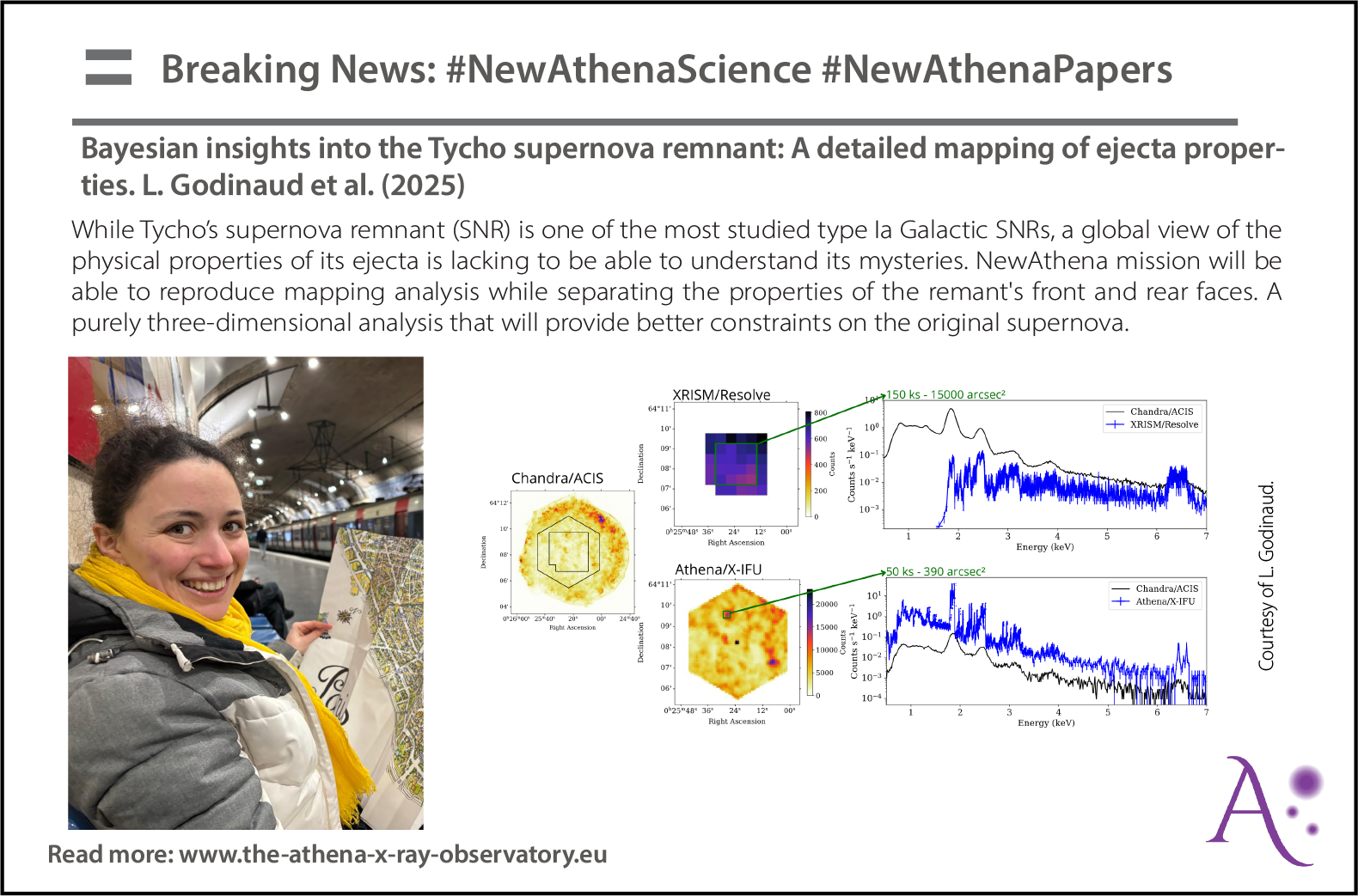
Bayesian insights into the Tycho supernova remnant: A detailed mapping of ejecta properties

SIXTE simulations of the center of Tycho’s SNR based on the parameter mapping presented in this study. We compare the images and spectra as observed by Chandra/ACIS, XRISM/Resolve and NewAthena/X-IFU.
By Leila Godinaud
While Tycho’s supernova remnant (SNR) is one of the most studied type Ia Galactic SNRs, a global view of the physical properties of its ejecta is lacking to be able to understand its mysteries. In particular, the spatial distribution of the Si-rich ejecta line-of-sight velocity presents an unexplained large-scale asymmetry, with the north dominantly blueshifted and the south redshifted.
To investigate the origin of this line-of-sight velocity asymmetry in the ejecta and its current dynamics, we carried out a detailed X-ray spatially resolved spectral analysis of the entire shocked ejecta in Tycho’s SNR to determine the physical properties of its various components. This study is based on the archival deep X-ray observations from the Chandra space telescope.
The spatially resolved spectral analysis in 211 regions over the entire SNR is based on a tessellation method applied to the line-of-sight velocity map. We modelled the ejecta emission with two thermal non-equilibrium ionisation components of different compositions for intermediate-mass elements (IMEs) and iron-rich ejecta. We included Doppler shift and line broadening and added a power law for the synchrotron emission, and additional constraints. A Bayesian tool (BXA) was used to conduct the fitting, using a nested sampling algorithm. This allowed us to obtain a complete view of the statistical landscape. We provide maps of the physical parameters of the various components across the SNR ejecta. We reveal different spatial distributions of temperature and ionisation time for IMEs and iron-rich ejecta, but none of these maps shows a structure associated with the large-scale north-south asymmetry in the line-of-sight velocity distribution. In the IME component, we observed an overall anti-correlation between the temperature and ionisation time that could arise from different ionisation histories. The abundance maps show spatial variations, depending on the element, perhaps due to an origin in different layers during the explosion. We compare these abundances with some nucleosynthesis models. In addition, we observe for the first time an emission line at 0.654 keV possibly related to oxygen.
This parameter mapping enables the production of advanced simulations of this remnant as it would be observed by XRISM and NewAthena using the SIXTE software. These simulations highlight the full potential of the NewAthena mission for studying remnants: we will then be able to reproduce this type of mapping analysis while separating the properties of the object's front and rear faces. A purely three-dimensional analysis that will provide better constraints on the original supernova.

